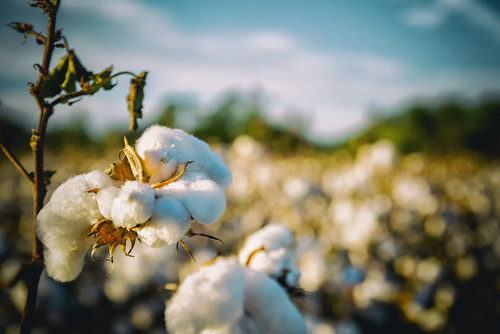
Do you the chemical and health differences between natural and artificial fibers? The three materials most common in use for skincare applications like masks, pads and applicators are: cotton, viscose rayon, and polyester.
The most common natural fibers are made from cotton. The raw material is called ‘cellulose’, and the natural cotton cellulose is grown on plants over a duration of six months.
Artificial fibers are produced chemically. Rayon is produced from plant pulp, where trees are chemically processed to extract cellulose from them to create man-made fibers. A powerful acid dissolves the cellulose out of the wood pulp to make Rayon.
Polyester is a chemical fiber produced from crude oil. An alcohol monomer refined from petrochemicals is combined with an acid to produce raw polyester.
Skin safety
Cotton and Rayon are both cellulose, which has not been found to cause irritation on skin. However rayon is produced from a chemical process that has been to found to contaminate the final product. Sulphur and Titanium Dioxide have been found in consumer products made from Rayon. Cotton does is not known to harm skin, and all our raw material has passed European certification for safety for humans. Polyester is an artificial but considered relatively safe. However some people have a rare allergy to plastics such as polyester. The safety aspect of cotton has made it popular among skincare users and cotton is nowadays extensively for cosmetic application and removal.
Strength and Absorbency
It is surprising to know that the strength of natural cotton fibers increases when they are wet, whereas some artificial fibers lose strength upon getting wet. Enhanced wet strength is pivotal for dry wipes that are mainly used to absorb liquid or oil. Rayon pads tend to fall apart when wet, while polyester has trouble absorbing. If your pad does not absorb properly, cosmetic solutions will tend to drip through the pad before application. The high value of wet strength is also prized in the medical industry where cotton can be used to clean, protect wounds, and absorb fluids.
Skin-Feel
The texture and feel of cotton is considered a major positive. Poorly manufactured cotton pads can have lint and clumps of fibers, however LilyBell cotton pads are made with a very consistently smooth surface texture. Depending on the manufacturing process, artificial fibers like polyester and rayon can have an abrasive texture. The wet texture if these materials is also important to investigate. When used as an applicator of toner or moisturizer, wet rayon can have an unwanted oily, slimy skin feel.
Cotton is environment-friendly
Natural Cotton does poses less burden on the environment than alternatives. All parts of the cotton plant are useful and it does not alter the ecosystem balance. Rayon has some health hazards for workers in production because of the chemicals used. These chemicals also have the risk of polluting local water. Polyester poses environmental problems both in its crude oil source, as well as disposal. Polyester takes a long time to biodegrade, and when washed contributes to microplastic pollution in the water supply. LilyBell cotton is designed to protect your skin as well as the environment.
For situations in which material will come in direct contact with the skin, natural cotton is the best choice. Suzuran has dedicated over 180 years of research into how to make the best cotton products, and we are proud to bring the best quality products to the world.

